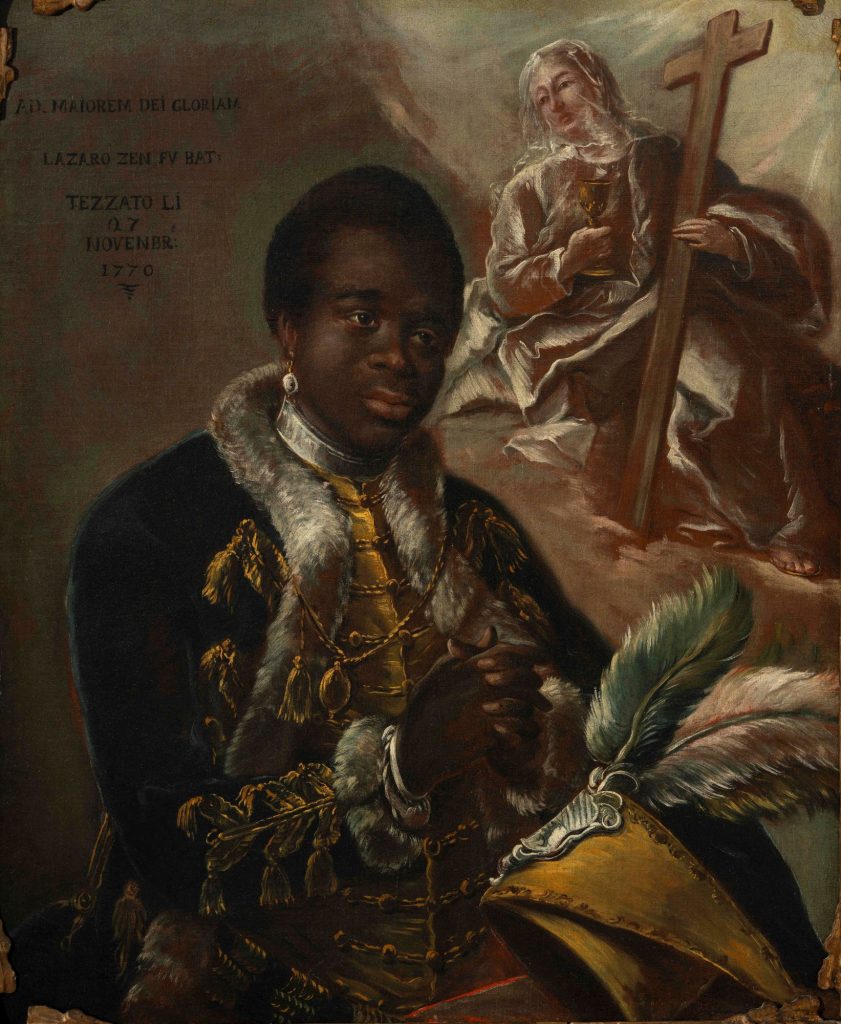GUESTS AT THE PALACE
Venice, Doge’s Palace
Picture Gallery – Chamber of the Magistrato alle Leggi
Until 14 April 2026
The exhibition “Guests at the Palace” continues with the presentation to the public of paintings that celebrate the role of Venice. For this fourth edition, the project invites visitors to rediscover the city’s artistic heritage through a direct encounter with a work from another local institution.
The guest is a rare example of Francesco Guardi’s (Venice, 1712–1793) portraiture, on loan from I.P.A.V. – Istituzioni Pubbliche di Assistenza Veneziane: The Portrait of Lazzaro Zen.
The painting, displayed in the Picture Gallery of the Doge’s Palace, recounts a unique and meaningful fragment of Venetian history — the story of Alì, who was baptized as Lazzaro Zen.
Known primarily as a painter of views, Francesco Guardi (Venice, 1712-1793) occasionally experimented with portraiture. The Portrait of Lazzaro Zen stands out among the rare known examples of this genre by the artist, a precious testimony to the phenomenon of religious conversions in eighteenth-century Venice. The young man was baptized on 27 November 1770, at the age of 18, changing his name from Ali to Lazzaro Zen, in honour of the family who welcomed him into their home and probably commissioned the painting.

Originally from the west coast of Africa, Ali escaped slavery by travelling from Algiers to Tunis, and finally to Smyrna, where he met the captain of a Venetian ship that took him to the Serenissima territories. Upon arriving in Venice, he was accompanied to the Pious House of Catechumens, an institution founded in 1557 to impart the teachings of Catholic doctrine. In the presence of the Patriarch, he was baptized during a solemn ceremony in the Church of San Zaccaria.
The portrait by Francesco Guardi commemorates this event in the inscription at the top left, while the elegant headdress features the coat of arms of the Zen family from Riva di Biasio. The blue velvet tailcoat is enriched by a voluminous white fur and decorated with showy tassels and abundant gold braid.
The lively and vibrant brushstrokes, typical of Guardi’s landscape painting, give way to a more formal, precise, and measured style, attentive to portraying the mirror image of reality. Depicted with subtle intensity, Ali’s absorbed gaze seems to capture the psychological tension conveyed to the viewer by a young man who, having cast aside the sufferings of the past, was embarking on a new life.
